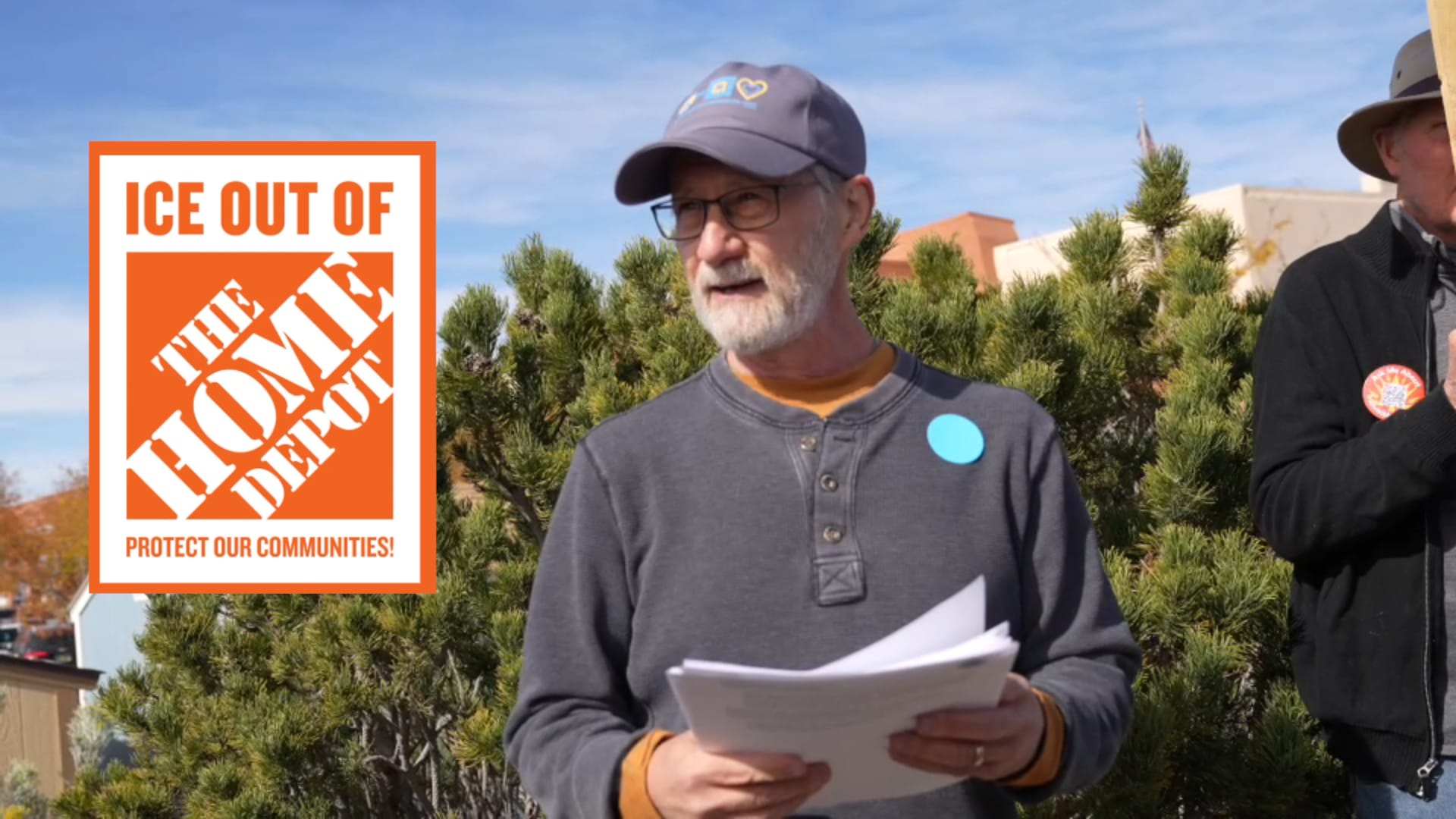This round-up of information includes materials from leading groups and organizations involved with civil protesting in the twenty-first century. It covers basic best practices in three areas: personal safety basics; de-escalation; and bystander intervention. It is not an exhaustive resource. For events sponsored by Indivisible Santa Fe, please follow guidance from ISF, including any additional sources of safety information identified by ISF.
Personal safety basics
Know the environment
- Have an offline map of the venue and surrounding areas available as cell service may be limited in some cases.
- Plan multiple routes into and out of the protest area.
- Set a rally point with others for where you will meet in the event of an emergency.
Stay aware and secure
- Maintain “360 situational awareness” – know what is going on all around you at all times.
- Be alert to anything that seems suspicious. This could be a person’s behavior, unclaimed packages, unusual activity, and vehicles.
- Contact law enforcement if you encounter suspicious circumstances.
Observe, orient, decide, act
The “OODA Loop” (Observe, Orient, Decide, Act) is a useful framework to stay calm and make decisions during high-stress situations:
Observe: Identify the source of danger and your surroundings.
Orient: Determine where you are and where you need to go.
Decide: Choose a course of action that minimizes risk.
Act: Implement your decision and stay aware of changes in the environment.
Be prepared to de-escalate
- Stay calm and keep your voice steady.
- Avoid provocative behavior.
- If necessary, remove yourself from the situation.
De-escalation
Note: de-escalation is not for handling people intent on disrupting or otherwise co-opting a peaceful demonstration. It is a technique for handling people who get upset, angry, or belligerent in the moment.
Decide whether to do anything other than walk away.
Respect personal space: If possible, stand 1.5 to 3 feet away from a person who is escalating. Allowing personal space tends to decrease a person’s anxiety and can help you prevent acting-out behavior.
Use nonthreatening nonverbals: The more a person loses control, the less they hear your words -- and the more they react to your nonverbal communication. Be mindful of your gestures, facial expressions, movements, and tone of voice. Keeping your tone and body language neutral will go a long way toward defusing a situation.
Avoid overreacting: Remain calm, rational, and civil. While you can’t control the person’s behavior, how you respond to their behavior will have a direct effect on whether the situation escalates or defuses. Positive thoughts like “I can handle this” and “I know what to do” will help you maintain your own rationality and calm the person down.
Ignore challenging questions: Answering challenging questions often results in a power struggle. If challenged, redirect the challenger's attention to the issue at hand.
Use silence: A person who is upset may not be able to focus on everything you say. Be clear and speak simply, and, if appropriate, offer the positive choice first. Then, allow time for decisions. Let there be silence. Give the other person a few moments to think through what you’ve said. A person’s stress rises when they feel rushed. Allowing time brings calm.
Bystander intervention
Note: this is general information, not specific to situations like ICE, DHS, or police activity. Intervening when law enforcement or other government authority is questioning or detaining somebody calls for a more specialized approach than the one outlined here.
The general goals of peaceful bystander intervention:
- support someone who’s being harassed;
- emphasize that harassment is not okay;
- demonstrate to others that they have the power to make their community safer.
Don't do nothing. Silence is dangerous -- it communicates approval and leaves the victim high and dry. If you find yourself too nervous or afraid to speak out, move closer to the person being harassed to communicate your support with your body.
Concrete, indirect steps to take
Indirect steps do not call for directly confronting or engaging the harasser.
Connect
Make your presence as a witness known.
- If possible, make eye contact with the person being harassed and ask them if they want support.
- Move yourself near the person being harassed. If possible and you feel you can risk doing so, create distance or a barrier between the person being harassed and the attacker.
- If possible, move yourself and the person being harassed to a safer space/place.
- Don't escalate the situation. The goal is to get the person being harassed to safety, not to incite further violence from the attacker.
Distract
Distraction is a subtle and creative way to intervene. Its aim is simply to derail the incident of harassment by interrupting it. The keys to good distraction are:
- Ignore the person who is harassing, and engage directly with the person who is being harassed.
- Don’t talk about or refer to the harassment that’s happening. Instead, talk about something completely unrelated.
Delegate
Delegation is asking a third party for help with intervening in harassment. The keys to delegation are:
- Look for a delegate who is ready and willing to help. Often, a great choice is the person right next to you.
- When you delegate someone to help you, try to tell them as clearly as possible what you’re witnessing and how you’d like them to help.
- Do not delegatate to or contact the police unless you’ve checked with the person being harassed and that person has explicitly asked you to call the police on their behalf.
Document
Documentation involves either recording or taking notes on an instance of harassment. It can be really helpful to record an incident of harassment, but there are some keys for safely and responsibly documenting harassment:
- Assess the situation. Is anyone helping the person being harassed? If not, use another of the 5Ds. Recording someone’s experience of harm without ensuring the person is already receiving help can just create further trauma. If someone else is already helping out: assess your own safety, and if you are safe, begin documenting.
- ALWAYS ask the person who was harassed what s/he/they want to do with your recording and/or notes. NEVER post it online or use it without the target's permission.
Follow up
Whether or not you can intervene in the moment, you can check in with the person being harassed afterwards to see if you can do anything to support the person, illustrating that the person is not alone. You might ask one of the following questions:
Is everything okay?
Is there anything I can do?
Is there someone we can call?
Can I buy you a cup of coffee?














